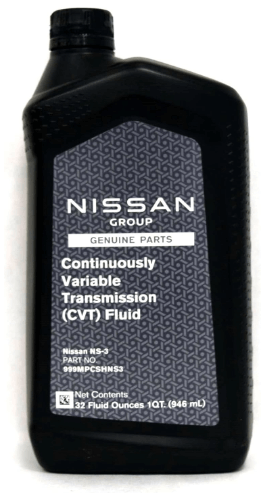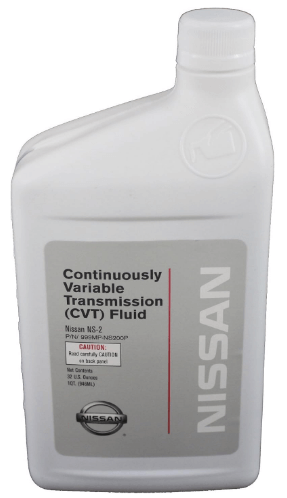One of the key components that helps maintain its smooth operation is the transmission system. Whether you’re performing regular maintenance or replacing fluid after a repair, knowing the correct transmission fluid capacity for your specific model year is essential.
In this guide, we’ll break down the transmission fluid capacity for all Nissan Murano models by year, including notes on transmission types and recommendations for the right type of fluid to use.
Nissan Murano Transmission Fluid Capacity
| Model Year | Engine | Transmission Type | Transmission Fluid Capacity (Approx.) |
|---|---|---|---|
| 2003 | 3.5L V6 | CVT (RE0F09B) | 10.1 quarts (9.5 liters) |
| 2004 | 3.5L V6 | CVT (RE0F09B) | 10.1 quarts (9.5 liters) |
| 2005 | 3.5L V6 | CVT (RE0F09B) | 10.1 quarts (9.5 liters) |
| 2006 | 3.5L V6 | CVT (RE0F09B) | 10.1 quarts (9.5 liters) |
| 2007 | 3.5L V6 | CVT (RE0F09B) | 10.1 quarts (9.5 liters) |
| 2009 | 3.5L V6 | CVT (RE0F10A) | 10.9 quarts (10.3 liters) |
| 2010 | 3.5L V6 | CVT (RE0F10A) | 10.9 quarts (10.3 liters) |
| 2011 | 3.5L V6 | CVT (RE0F10A) | 10.9 quarts (10.3 liters) |
| 2012 | 3.5L V6 | CVT (RE0F10A) | 10.9 quarts (10.3 liters) |
| 2013 | 3.5L V6 | CVT (RE0F10A) | 10.9 quarts (10.3 liters) |
| 2014 | 3.5L V6 | CVT (RE0F10D) | 10.9 quarts (10.3 liters) |
| 2015 | 3.5L V6 | CVT (RE0F10D) | 10.9 quarts (10.3 liters) |
| 2016 | 3.5L V6 | CVT (RE0F10D) | 10.9 quarts (10.3 liters) |
| 2017 | 3.5L V6 | CVT (RE0F10D) | 10.9 quarts (10.3 liters) |
| 2018 | 3.5L V6 | CVT (RE0F10D) | 10.9 quarts (10.3 liters) |
| 2019 | 3.5L V6 | CVT (RE0F10D) | 10.9 quarts (10.3 liters) |
| 2020 | 3.5L V6 | CVT (RE0F10D) | 10.9 quarts (10.3 liters) |
| 2021 | 3.5L V6 | CVT (RE0F10D) | 10.9 quarts (10.3 liters) |
| 2022 | 3.5L V6 | CVT (RE0F10D) | 10.9 quarts (10.3 liters) |
| 2023 | 3.5L V6 | CVT (RE0F10D) | 10.9 quarts (10.3 liters) |
| 2024 | 3.5L V6 | CVT (RE0F10D) | 10.9 quarts (10.3 liters) |
Note: Capacity includes total fill (dry). A simple drain and refill will typically require less fluid, around 5–6 quarts, depending on the model and service method.
Related Best Synthetic Engine Oil(Top 5 Best in 2025)
Recommended Nissan Murano Transmission Fluid
1. Nissan Genuine OEM CVT-3 Transmission Fluid

For 2013 and newer Murano models using NS-3 fluid
- Specifically engineered for Nissan CVT transmissions requiring NS-3 fluid
- 5-quart jug is ideal for most drain-and-refill services
- Provides optimal metal-to-metal wear protection and thermal stability
- Genuine OEM product ensures compatibility and long-term transmission performance
2. Nissan Genuine OEM CVT-NS-2 Transmission Fluid

For 2003–2012 Murano models using NS-2 fluid
- Designed for Nissan CVTs requiring NS-2 fluid, including early Murano models
- Comes in 1-quart bottles for precise fluid control and top-offs
- Protects against belt slippage and overheating in older CVT systems
- OEM-approved formula maintains consistent pressure and shift quality
Signs Your Murano Needs a Transmission Fluid Change
CVTs are sensitive to fluid conditions. Watch for these signs that it might be time for a change:
- Hesitation when accelerating
- Jerking or shuddering at low speeds
- Overheating or warning lights on the dashboard
- A high-pitched whining noise from the transmission
- Fluid that smells burnt or is dark in color
Routine replacement intervals for CVT fluid in the Murano typically range from 30,000 to 60,000 miles, but heavy-duty usage (like towing or mountain driving) may shorten that.
Related Nissan Altima Engine Oil(Recommended)
How to Check Transmission Fluid on a Nissan Murano
Newer Murano models (especially 2015 onward) do not have a traditional dipstick, making checking fluid levels more difficult. In those cases, service usually requires a technician using a scan tool to verify temperature and level via the drain plug.
For older models with a dipstick (2003–2014):
- Park on a level surface and warm the engine.
- Move through all gear positions and return to Park.
- With the engine idling, remove the dipstick and wipe it clean.
- Reinsert, remove again, and check the level and fluid color.
Related Nissan engine oil capacity chart(For All Models)
Tips for Nissan Murano Transmission Maintenance
- Always use OEM-specified fluid (NS-2 or NS-3).
- Avoid overfilling, as it can cause foaming and overheating.
- When changing fluid, consider also replacing the transmission filter if accessible.
- If unsure or inexperienced, have a qualified mechanic perform the service, especially on newer CVT models.
Related Dexron II Equivalent(Top 5 BEST Equivalent 2025)
FAQs
How much transmission fluid does a 2005 Nissan Murano hold?
The 2005 Nissan Murano with a 3.5L V6 engine and CVT (RE0F09B) transmission holds approximately 10.1 quarts (9.5 liters) of transmission fluid for a full dry fill. A standard drain and refill typically requires around 5 quarts.
How much transmission fluid does a 2009 Nissan Murano 3.5 take?
The 2009 Nissan Murano 3.5L V6 with the RE0F10A CVT transmission has a total fluid capacity of 10.9 quarts (10.3 liters). During a routine service, expect to use 5–6 quarts for a partial change.
How much CVT fluid does a 2015 Nissan Murano hold?
A 2015 Nissan Murano equipped with the RE0F10D CVT holds approximately 10.9 quarts (10.3 liters) when completely dry. A typical drain and refill service will require about 5–6 quarts.
How much transmission fluid do I need for a 2011 Nissan Rogue?
The 2011 Nissan Rogue with a CVT transmission requires around 9.0 quarts (8.5 liters) for a full fluid change. For a drain and refill, you’ll typically need 4 to 5 quarts of Nissan NS-2 CVT fluid.
How many quarts of transmission fluid does a 2006 Nissan Murano take?
The 2006 Nissan Murano with the RE0F09B CVT transmission has a full capacity of 10.1 quarts (9.5 liters). A regular drain and refill service usually requires about 5 quarts of NS-2 CVT fluid.
Final words
Keeping your Nissan Murano’s transmission fluid at the correct level and in good condition is crucial for long-term performance and reliability. By referring to the year-by-year fluid capacity chart and using the right type of CVT fluid, you can ensure your vehicle continues to run smoothly for years to come.




